Your caravan might not do lots and lots of miles every year, but it doesn’t mean you shouldn’t carry out regular checks on its tyres, including the spare (if you carry one).
Try and get into the habit of checking your caravan tyres at least once a month and always before each trip.
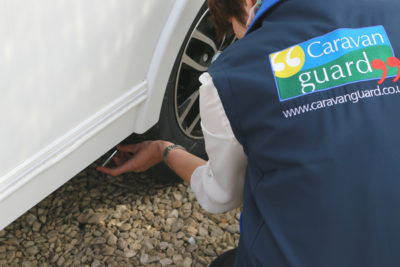
As a general rule, for any touring caravan, no matter how much it’s been out on the roads – look to change the tyres every five years. Sitting around can actually do more harm to a caravan tyre than using it.
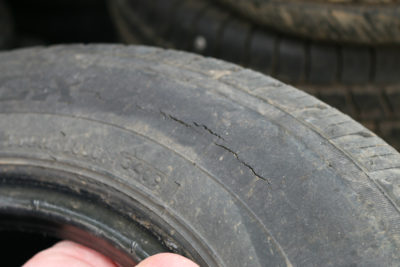
It’s therefore important to regularly look out for any signs of under- or over-inflation, cracks on sidewalls – even hairline cracks can develop into something worse – plus, any bulges or splits. Tread wear is also important to check and to remove any stones, particularly if you’re using a motor mover.
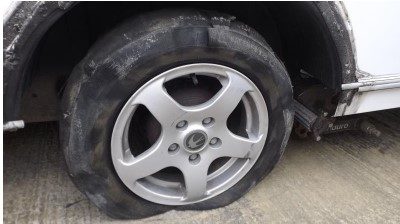
A recent report highlighted nearly half of all breakdowns on the UK’s roads (including motorways) over a three-year period were caused by tyre-related issues. And, each year we deal with a number of caravan insurance claims for road accidents relating to caravan wheel or tyre safety.
Potholes and caravan tyres
It’s important to watch out for those potholes and to steer clear where possible. Slow down on roads with potholes and poor surfaces to prevent uneven tyre wear – hitting a pothole with your caravan tyre could lead to a puncture or worse still a tyre blowout and even cause damage to your motor mover (if fitted), or even its axle.
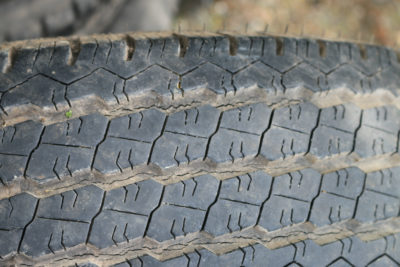
Read your tyres right
Your caravan owner’s manual should carry details of the correct size, load and speed rating for tyres for your specific vehicle. Or sometimes it’s on the side of your caravan. If you can’t find this information, contact the manufacturer direct, or your supplying dealer.
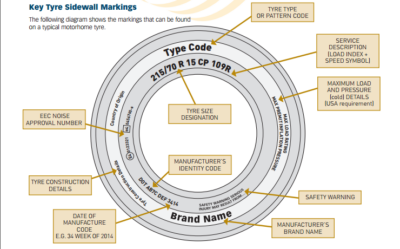
Source: Tyresafe
Make a PACT for caravan tyre safety
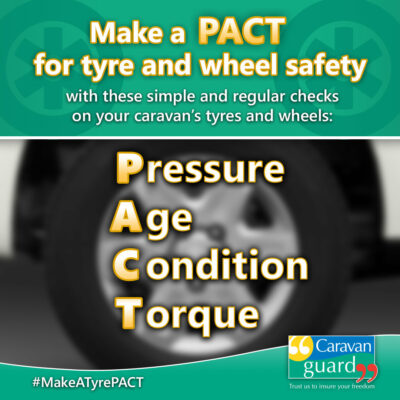
We use the acronym and word PACT to help caravanners remember four simple checks on their tourer’s tyres and wheels to help prevent a tyre blow-out or wheel detachment.
Also worth viewing is our video at www.caravanguard.co.uk/news/video-make-a-pact-for-caravan-tyre-and-wheel-safety-16044/
Here we take you through the PACT acronym:
Pressure points
Running your caravan at the correct tyre pressures is crucial.
Under-inflation will result in poorer fuel economy when you’re towing as well as affecting towing stability, braking distance, cornering and is often the direct cause of a full-scale blowout.
If you over-inflate, you create a stiffer sidewall for the tyre, which will also wear quicker as well as offering less grip.
The British Tyre Manufacturers’ Association (BTMA) points out: “Surveys show repeatedly that 25% of vehicles have at least one tyre 25% under-inflated. Over 600,000 tyres and 1.5 million tonnes of CO2 are wasted in the UK every year due to tyre under-inflation.”
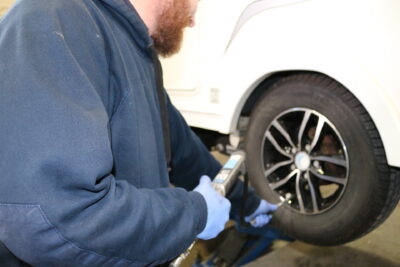
You should always check pressures when your tyres are cold.
Age matters
There are no fixed laws here but – as a general rule – it’s worth having your caravan’s tyres changed every five years.
You also need to make provision to check on your tyres if your tourer is standing still for long periods, including over winter. That’s because prolonged sitting on just one part of the tyre can cause it to deteriorate.
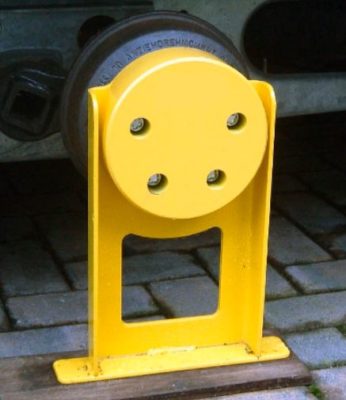
That’s why some owners prefer to remove their wheels altogether during long periods of non-use and use products often called “winter wheels” (these have the added bonus of making your caravan harder to steal when fitted).
Condition
Regularly inspect your caravan tyres for cuts, bulges, or any visible damage. Pay attention to the tyre sidewalls and tread for signs of wear.
Check the tread using an approved tread gauge. The tyre should have at least 1.6mm of tread over three quarters of the tyre surface on its entire circumference. Typically, anything less than 3mm is when you should be considering a new tyre.
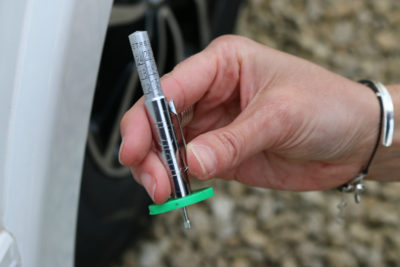
In all cases, don’t forget to check your caravan’s spare tyre for its pressure, age and condition.
Torque – Why we need to torque your caravan wheels
One other key aspect of caravan tyre safety is check the wheel nut torque using a calibrated torque wrench. The cause of a caravan wheel detatchment is often from the wheel nuts being too loose, or over-tightened.
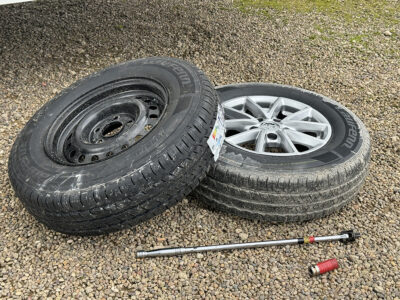
Check the torque in a star formation, and remember to loosen the torque wrench when finished.
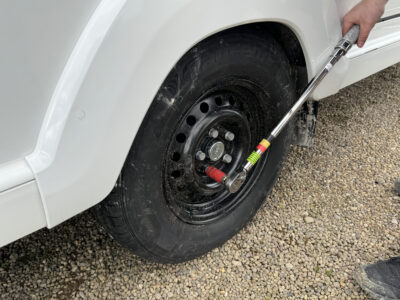
The correct torque value can often be found on the side of your caravan.
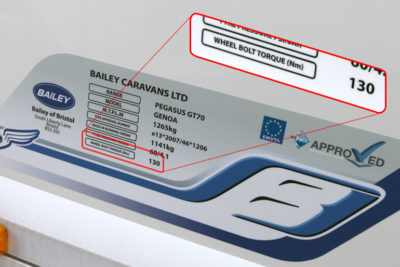
Devices for more caravan tyre safety
Other caravan tyre safety fittings that you might like to consider adding (if you don’t already have them) include TPMS (tyre pressure monitoring systems) and Tyron Safety Bands.
A tyre pressure monitoring system will alert you if the pressure gets too low (or too high) in an individual tyre. It will also warn of excessive internal temperature for any given tyre.
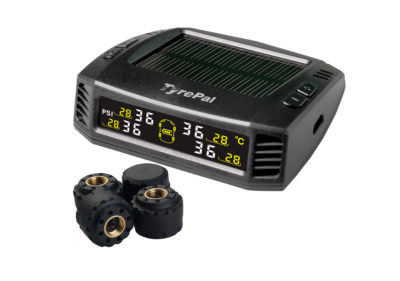
Tyron’s Mulitbands are used on a variety of vehicles where safety is absolutely paramount, including emergency vehicles. They lock the deflated tyre onto the wheel in the event of a total blow-out to allow you to drive to an area of safety.
We offer a discount on our caravan insurance premiums for caravanners who fit either Tyron bands or a tyre pressure monitoring system.
Other caravan tyre safety top tips
- If you carry a spare wheel, make sure it’s compatible with the other tyres you’re already using. And make sure it is always correctly inflated to the right pressure.
- Chances are, your caravan is going to sit around for extended periods, so you might want to consider specialist wheel covers. These will protect your caravan tyres from damage from UV light and frost.
- Also when tucked up in storage for long periods, consider moving the caravan backwards or forwards every month or so, or jacking up and rotating the wheels. This will mean that a different part of the tyre will take the load for a while.
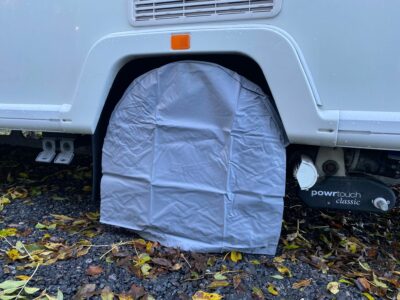
Over to you…
Got any advice on caravan tyre safety you’d like to pass on to fellow caravanners. Please feel free to add a comment below.


We always jack caravan up and put caravan on axle stands for the winter.
( keeps tyres off the floor )
I would suggest an easy tip if you cannot move your van forward or back. Simply mark in two places on the tyre where it stands on the ground. (I used tippex)., Every so often jack the van up and turn the wheel a half turn the first time followed by a quarter turn next time. This way the tyre is never sitting on the same part. Alternatively set the caravan on blocks under the chassis and negate the need for the above.
Thanks for the tip Ian